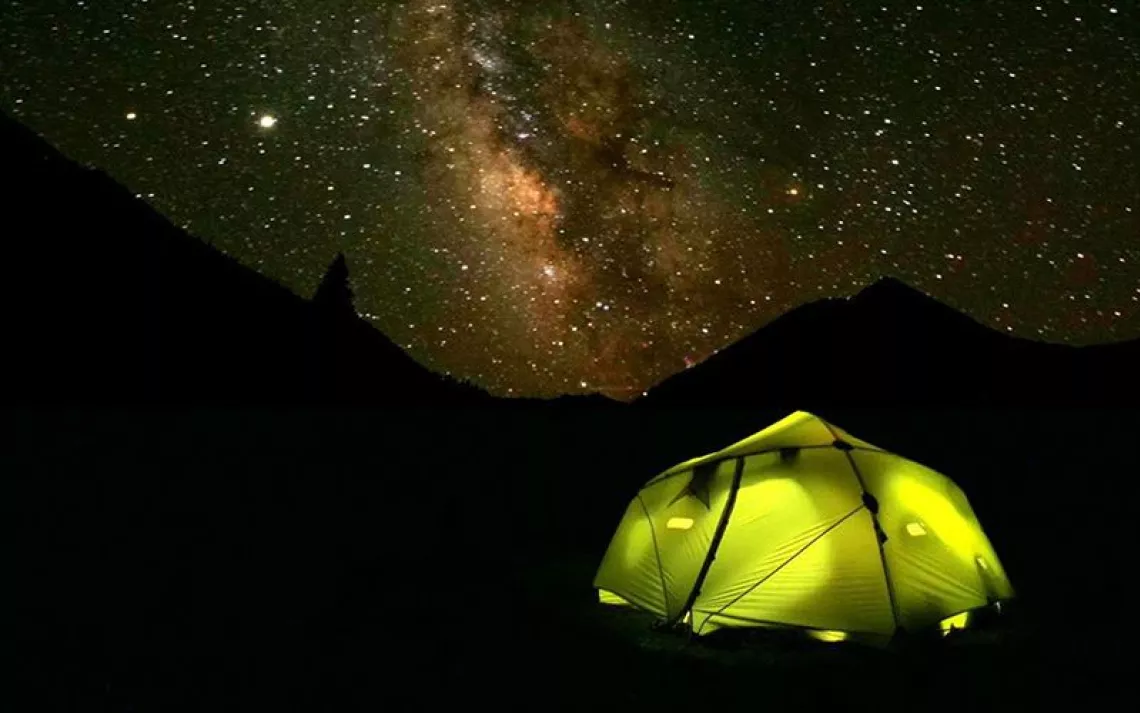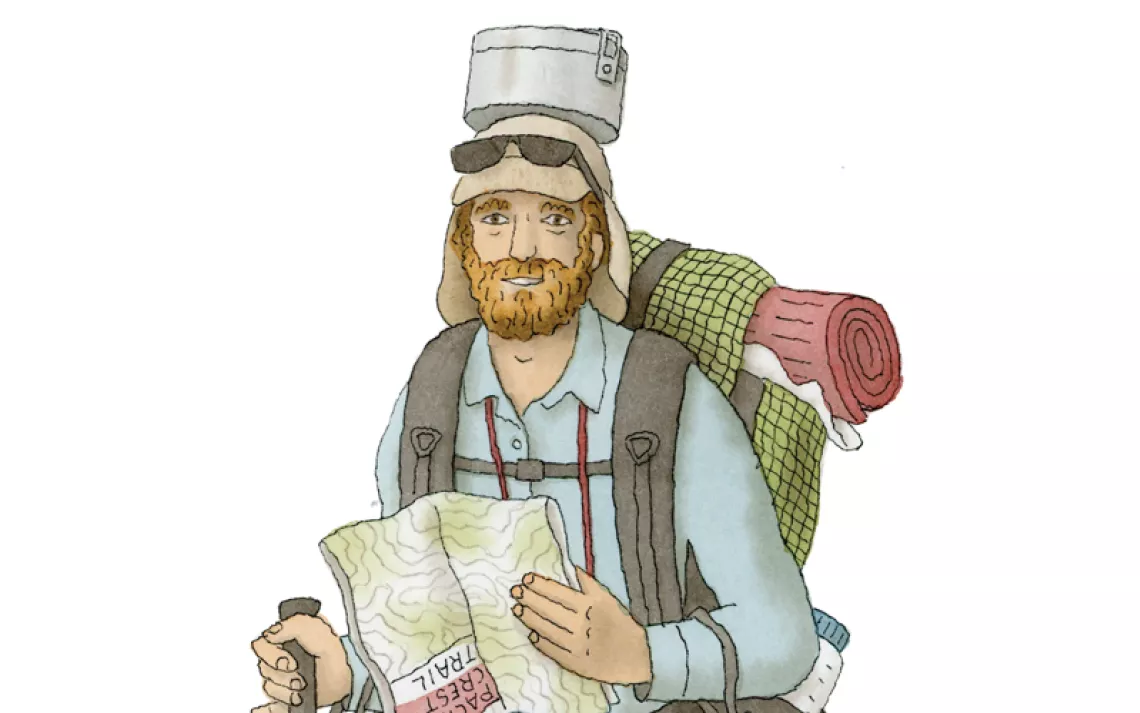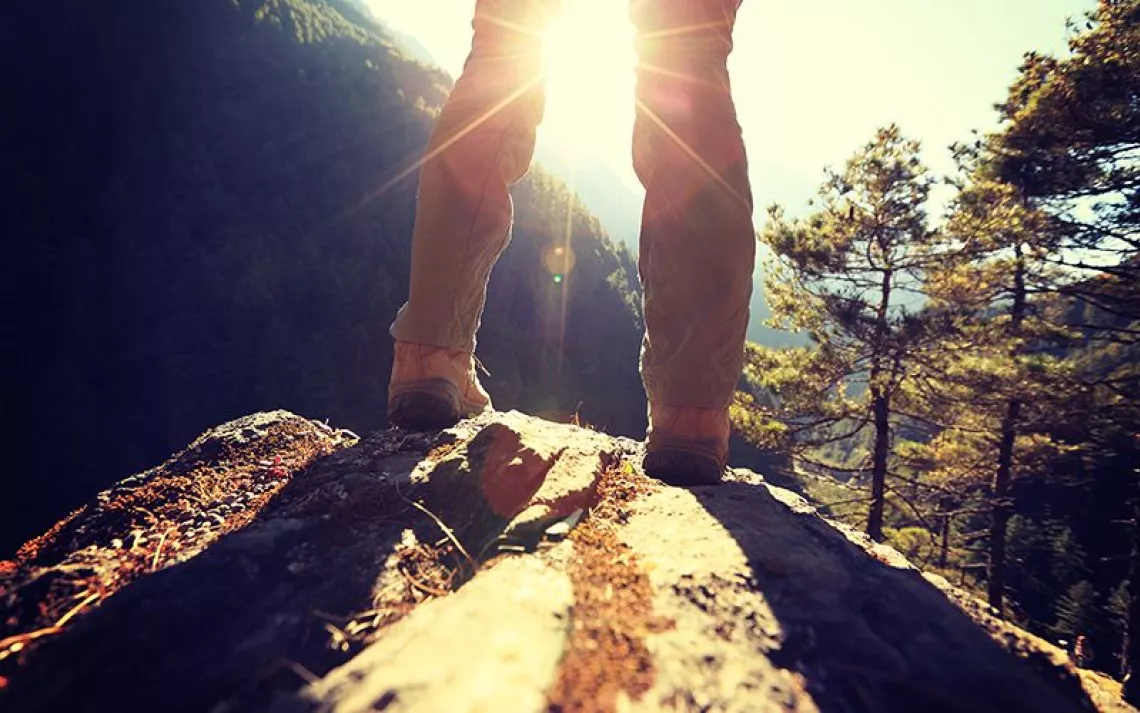ENVIRONMENT EXPLAINED
How to Treat Backcountry Water on the Cheap
Yes, you should disinfect your water. No, you don’t need an expensive filter.

Photo by stockstudioX/iStock
The year I graduated from college, I was accepted into a program to teach English on a small Pacific atoll without running water or electricity. I hadn’t traveled much, so I had a long list of things to buy: luggage, footwear, clothing, snorkeling gear, a solar charger, a headlamp.
The most daunting item on the list was a water filter. I remember standing in an outdoor-gear store with my mom, overwhelmed as the salesperson explained the difference between disinfection and purification, which types of disease-causing microbes could get through which types of filters, and the benefits of gravity-fed systems versus pumps. I eventually walked away $150 poorer but satisfied that I was carrying a filter that would last for a lifetime of globe-trotting adventure.
In the years since, I’ve hiked, biked, kayaked, canoed, and rafted in a half dozen countries and some of the most remote parts of the United States. I’ve taken several Wilderness First Responder courses and led inexperienced teenagers on multiweek expeditions through the backcountry of Alaska. And my fancy water filter? It’s been sitting unused in a closet for nearly a decade.
It’s not because I don’t treat my water, which was the tactic that a controversial Slate article suggested last month. Citing limited and outdated research on the prevalence of water-borne pathogens, the article argued that backcountry water treatment is mostly unnecessary, because the risk of getting sick from untreated water has been overblown by a gear industry with a vested interest in selling expensive water filtration systems. The story suggested that because the outdoor recreation community is whiter, wealthier, and more privileged than the overall U.S. population, misinformation about the necessity of water filtration propagated easily.
Scientists and outdoor enthusiasts reared up to defend backcountry water treatment. Readers shared horror stories of their experiences with Giardia, a water-borne protozoa that causes debilitating diarrhea. Outside magazine responded with an article titled “Actually, Slate, You Really Should Filter Your Water.” And journalist Erik Vance took to the science blog Last Word on Nothing to write that because he’s spent many hours filtering water with “ceramic filters, paper filters, those odd filters attached to the bottles, tablets, drops, UV light, and good-old-fashioned boiling,” he wanted desperately to believe the Slate article—but that science (and common sense) just didn’t back it up. “This is not just conspiracy cooked up by Big Filter,” Vance wrote. “There is some dirty water in seemingly clean places.”
I couldn’t agree more. It’s dangerous and irresponsible to suggest that you can drink carte blanche from rivers, streams, and lakes while camping or hiking. The scientific literature shows that one-in-five to one-in-10 of all tested backcountry sites—even those featuring seemingly pristine water sources—harbor some kind of disease-causing pathogen.
This doesn’t mean, however, that Vance needs to spend hours at camp pumping water or that would-be outdoor enthusiasts need to navigate an endless gauntlet of articles about water filtration. In fact, as the Slate article correctly pointed out, expensive or technical water filters are one more barrier to outdoor access for people—particularly nonwealthy or nonwhite people—who have been historically excluded from America’s wild places.
Take my 22-year-old sister-in-law, who grew up in a big family with no money to spare in a tiny Iowa farm town. She’s trying to get into backpacking, and it’s hard. If she wants to camp and backpack for a week over spring break, she needs to buy or borrow, at minimum, a pack, a sleeping pad, a sleeping bag, a backpacking stove and pot, a water bottle, a headlamp, some base layers, rain gear, a warm jacket, and a tent or tarp.
But unlike a backpack or a tent, a water filter is not something she should worry about. There are other options—including one that costs less than $2 and involves items you likely already have in the house.
I’m talking about bleach. Safe, lightweight, and cheap, it’s been my go-to water-treatment system for years. Here’s how I do it: I buy plain (unscented) bleach for $1 from the grocery store and put it in something like a $0.50 plastic dropper. When my water bottle is empty, I fill it in a stream, add two drops of bleach per liter of water, then let it sit for 30 minutes. That’s it.

Sign up to receive Sierra News & Views
Get articles like this one sent directly to your inbox weekly.
With this action you affirm you want to receive Sierra Club communications and may vote on policy designated by the Sierra Club Board.
Two drops per liter (or eight drops per gallon) is the amount recommended by the Environmental Protection Agency and the Centers for Disease Control and Prevention. The CDC calls disinfection with chlorine a “pathogen reduction method”—meaning it significantly reduces the risk of water-borne pathogens but doesn’t completely eliminate it. However, the CDC refers to most water filters the same way. Filters are highly effective at killing Giardia but often less great at getting rid of viruses, for instance, while bleach is highly effective at killing viruses but less effective when it comes to Giardia.
“If one is going to be drinking water in areas where protozoa may be an issue, I would recommend an alternative method,” says Aaron Reilly, an assistant professor at the University of New Mexico who specializes in wilderness medicine.
That is, if your water looks suspect—there are cattle grazing upstream, a dead animal floating nearby, a pile of poop on shore—bleach might not be the best option. In such situations, the safest bet is to boil the water for one minute before drinking (three minutes if you’re at an altitude higher than 6,500 feet). Boiling kills just about everything. You can use boiling as your primary water treatment method, too, but because you have to bust out a stove and pot and then wait for the water to cool, it’s not ideal for staying hydrated during a long day of hiking.
Another method is to treat your water with chlorine dioxide. This is different from the sodium hypochlorite found in household bleach, and it’s what’s found in popular water treatment drops like Aquamira. It’s more effective than bleach at killing Giardia. It’s also a little more expensive and harder to come by—you have to buy the drops or tablets at an outdoor-gear store or online retailer at a cost of $15 for 30 gallons of water—and it consists of two bottles you have to carry separately and mix together when you’re ready to disinfect water. But in the grand scheme of things, Aquamira and other chlorine dioxide treatments are relatively affordable and simple—and some people prefer their taste over that of regular chlorine bleach.
Personally, I don’t notice much taste from either. I regularly drink tap water, which is often chlorinated with sodium hypochlorite. And on those rare occasions when I find myself standing in front of a spring gushing straight from the earth, or a glacially fed stream with little risk of upstream contamination, I bend on my knees and drink straight from the source. It’s an incomparable treat—a reward for all the careful water treatment that kept me healthy enough to reach it.
 The Magazine of The Sierra Club
The Magazine of The Sierra Club



